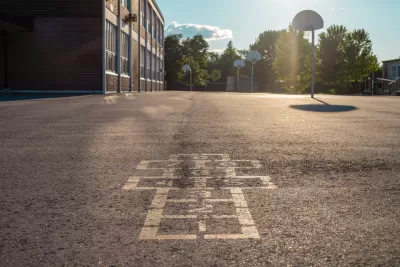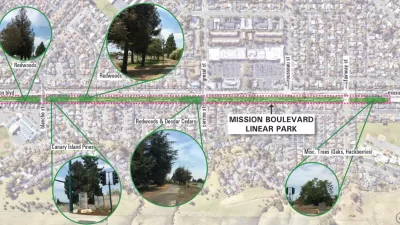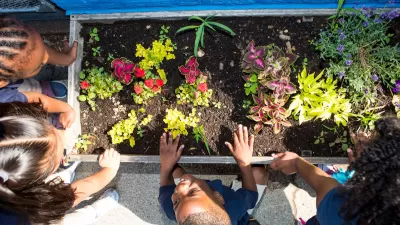New research suggests that switching from asphalt to green, park-like schoolyards brings economic benefits in addition to public health improvements.

“A new study from Trust for Public Land effectively dispels a common misconception among school administrators about the price tag of transforming asphalt-covered and treeless schoolyards into green schoolyards,” according to a press release from TPL. “The study compared the typical cost of building and maintaining a traditional ‘gray’ or asphalt-covered schoolyard in California to a ‘green’ schoolyard (replacing asphalt with more natural green space and infrastructure) over a 20-year period. While gray schoolyards had a moderately lower initial renovation cost ($2.3 million compared to $2.6 million for green schoolyards), they yielded no benefits over time, with schools continuing to sink money into resealing asphalt.” By contrast, green schoolyards bring close to $600,000 in net benefits. These include higher student attendance and staff retention, better academic performance, and savings on energy costs.
“The findings make a strong case for schools to stop wasting resources in maintaining asphalt and blacktop – surfaces that create uncomfortable and dangerously hot environments during recess on triple-digit temperature days in Los Angeles – and instead invest them in green schoolyards, which create safer, healthier learning environments for students.”
Green schoolyards can also double as community parks outside of school hours, providing critical green space in park-poor neighborhoods. “Trust for Public Land’s pilot program with the Oakland Unified School District is improving park equity in the area by bringing green schoolyards to five campuses.” In Southern California, Los Angeles Unified School District’s superintendent Alberto Carvalho has pledged to issue a plan for greening the city’s schoolyards.
FULL STORY: Cost-Benefit Analysis: Green Schoolyards Brings Major Benefits, Cost Savings

Planetizen Federal Action Tracker
A weekly monitor of how Trump’s orders and actions are impacting planners and planning in America.

San Francisco's School District Spent $105M To Build Affordable Housing for Teachers — And That's Just the Beginning
SFUSD joins a growing list of school districts using their land holdings to address housing affordability challenges faced by their own employees.

The Tiny, Adorable $7,000 Car Turning Japan Onto EVs
The single seat Mibot charges from a regular plug as quickly as an iPad, and is about half the price of an average EV.

San Diego Votes to Rein in “Towering” ADUs
City council voted to limit the number of units in accessory buildings to six — after confronting backyard developments of up to 100 units behind a single family home.

Texas Legislature’s Surprising Pro-Housing Swing
Smaller homes on smaller lots, office to apartment conversions, and 40% less say for NIMBYs, vote state lawmakers.

Even Edmonton Wants Single Staircase Buildings
Canada's second most affordable major city joins those angling to nix the requirement for two staircases in multi-family buildings.
Urban Design for Planners 1: Software Tools
This six-course series explores essential urban design concepts using open source software and equips planners with the tools they need to participate fully in the urban design process.
Planning for Universal Design
Learn the tools for implementing Universal Design in planning regulations.
Borough of Carlisle
Smith Gee Studio
City of Camden Redevelopment Agency
City of Astoria
Transportation Research & Education Center (TREC) at Portland State University
City of Camden Redevelopment Agency
Municipality of Princeton (NJ)





























